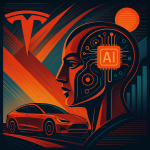Key Points
- Immediate market impact: Wu Yongming (Wú Yǒngmíng 吴泳铭) keynote drove Ālǐbābā 阿里巴巴 shares up ~9.16% intraday, adding HK$278.5 billion (¥254.6 billion RMB, $34.9 billion USD) to market value.
- Big bets — products & spending: Ālǐ yún 阿里云 highlighted the Qwen family (Qwen3‑Max, Qwen3‑VL, Qwen‑Coder‑Plus, Tongyi Wanxiang/通义万相) and a ¥380 billion RMB three‑year AI infrastructure plan; Qwen derivatives on Hugging Face exceed 170,000 variants.
- Measurement split — full‑stack vs usage: Omdia reports a 35.8% full‑stack share for Alibaba (H1 2025), but token metrics show ~536.7 trillion tokens in H1 2025 with Volcano Engine (Huǒshān Yǐnqíng 火山引擎) at ~49.2% vs Alibaba ~27%.
- Moat under test: The three‑stage ASI roadmap (emergence → autonomous action → autonomous self‑learning) is bold, but durable advantage depends on wins in token economics, multimodal generation, and self‑improving models.

Alibaba Cloud AI vision by Wu Yongming (Wú Yǒngmíng 吴泳铭) triggered a dramatic market reaction and sharpened questions about the company’s claimed full‑stack advantage.
Overview — Alibaba Cloud AI market reaction
At Alibaba Group (Ālǐbābā 阿里巴巴), CEO Wu Yongming (Wú Yǒngmíng 吴泳铭) used the company’s cloud summit keynote to lay out a technical roadmap toward what he calls ASI — Artificial Superintelligence.
He positioned Alibaba Cloud (Ālǐ yún 阿里云, commonly Alibaba Cloud) and the Tongyi Qianwen (Tōngyì Qiānwèn 通义千问; “Qwen”) family of models at the center of that future.
The speech sent Alibaba’s Hong Kong shares sharply higher and added roughly HK$278.5 billion (¥254.6 billion RMB, $34.9 billion USD) to the company’s market value almost immediately.
But analysts and market data suggest Alibaba’s claimed “full‑stack” advantage faces meaningful competitive pressure — especially when measured by token consumption and market footprint.

Resume Captain
Your AI Career Toolkit:
- AI Resume Optimization
- Custom Cover Letters
- LinkedIn Profile Boost
- Interview Question Prep
- Salary Negotiation Agent

Key takeaways — quick bullets for investors and builders
- Three‑stage ASI roadmap: emergence from human data, autonomous action (agents/tools), and autonomous self‑learning/self‑iteration.
- Big thesis: large models are the next operating system, and AI Cloud is the next computer.
- Infrastructure commitment: Alibaba already announced a 3‑year, ¥380 billion RMB ($52.1 billion USD) AI infrastructure plan and says it will add capital beyond that.
- Market measurements diverge: Alibaba leads in full‑stack AI cloud share per Omdia, but token‑consumption metrics show competitors — notably Volcano Engine (Huǒshān Yǐnqíng 火山引擎) — ahead.

Why the market reacted — vision moves markets
Investors often reward bold strategy and credible execution paths.
Alibaba previously showed investor sentiment can swing strongly on management tone and vision.
After the company’s Q4/2025 earnings call on August 29, the stock rallied 12.9% when Wu Yongming (Wú Yǒngmíng 吴泳铭) and Alibaba China e‑commerce CEO Jiang Fan outlined an expanded local‑services strategy.
At the Alibaba Cloud (Ālǐ yún 阿里云) Cloud Summit keynote on September 24, Wu framed two core theses:
- “Large models are the next OS.”
- “AI Cloud is the next computer.”
Putting those together, and positioning Alibaba Cloud as the hardware + infrastructure platform running open models like Qwen, led investors in Hong Kong to bid up Alibaba shares by about 9.16% intraday.
The market move equated to roughly HK$278.5 billion (¥254.6 billion RMB, $34.9 billion USD) in added market value according to the aggregator cited in reporting.

Find Top Talent on China's Leading Networks
- Post Across China's Job Sites from $299 / role, or
- Hire Our Recruiting Pros from $799 / role
- Qualified Candidate Bundles
- Lower Hiring Costs by 80%+
- Expert Team Since 2014
Your First Job Post

Wu’s ASI technical roadmap — three practical phases
Wu laid out ASI in three technical phases.
- Emergence: intelligence from learning on human data.
- Autonomous action: models that decompose tasks, use and build tools, and act as agents.
- Autonomous self‑learning: models that construct their own training infra, optimize data flows, and upgrade architectures without human intervention.
Wu argued the industry is currently in phase two.
He highlighted “AI coding” — agents that can code autonomously — as the gateway to tackling complex, open‑ended problems.
He also acknowledged that phase three requires models to learn rules of the world beyond human‑curated knowledge sets and did not provide a technical blueprint for true self‑directed scientific induction.
Alibaba Cloud CTO Zhou Jingren (Zhōu Jìngrén 周靖人) noted many unresolved technical challenges: architecture, systems, continual learning algorithms.
He also said the industry continues to see rapid capability improvements across multiple vendors.

ExpatInvest China
Grow Your RMB in China:
- Invest Your RMB Locally
- Buy & Sell Online in CN¥
- No Lock-In Periods
- English Service & Data
- Start with Only ¥1,000

Products and model roadmap announced — Qwen family and multimodal pushes
At the summit Alibaba Cloud highlighted model and product updates in the Qwen family and related multimodal work.
- Qwen3‑Max: described as a top‑performance Qwen variant with parameter scale above one trillion and performance rivaling Anthropic’s top model and OpenAI’s strongest offerings.
- Qwen3‑VL: a multimodal understanding model claimed to handle very long videos (up to ~2 hours) for comprehension tasks.
- Qwen‑Coder‑Plus: an upgraded code generation model.
- Wan2.5‑Preview (Tongyi Wanxiang 通义万相): an initial audio‑video integrated generation model offering synchronous audio‑video generation (supporting 10s 1080p outputs in preview form).
Alibaba positioned Tongyi Qianwen (Tōngyì Qiānwèn 通义千问 / “Qwen”) as an open, Android‑style ecosystem (“open source + full‑stack”), aiming to drive broad adoption and third‑party development.
Alibaba says Qwen derivative models on Hugging Face exceed 170,000 variants, indicating rapid community activity around Qwen‑based forks and fine‑tunes.

Infrastructure and spending — beyond ¥380 billion RMB ($52.1 billion USD)
Wu reiterated the firm’s prior three‑year plan to invest ¥380 billion RMB ($52.1 billion USD) in AI infrastructure.
He said Alibaba Cloud will continue adding capital beyond that amount to scale global data centers and power growth in AI compute demand.
He predicted that by 2032 global data center energy consumption for Alibaba Cloud could be roughly ten times the scale of 2022’s baseline (the “gen‑AI year”).
Wu used the ASI thesis to argue human–AI collaboration will deepen.
He described an evolution from “Vibe Coding” to “Vibe Working” where agents, robots and on‑prem/edge devices act as persistent collaborators.
He even speculated about households and workplaces using dozens to hundreds of GPUs per person in future settings.

Competitive landscape — full‑stack share vs. token economics
How you measure the market matters.
On a full‑stack definition (IaaS + PaaS + MaaS), industry data from Omdia places Alibaba Cloud first in China’s AI cloud market for H1 2025 with a reported 35.8% share.
That share was reported as greater than the combined share of the next three players: Volcano Engine (Huǒshān Yǐnqíng 火山引擎), Huawei Cloud (Huáwéi 华为), and Tencent Cloud (Téngxùn Yún 腾讯云).
Alibaba’s open‑source strategy and in‑house stack are frequently cited as its moat.
But when measured by token consumption — a proxy for real model usage and revenue in many large‑model services — the leaderboard changes.
IDC reported China’s public‑cloud large‑model token calls totaled about 536.7 trillion tokens in H1 2025.
Volcano Engine claimed roughly 49.2% of that token share, while Alibaba Cloud accounted for 27% and Baidu (Bǎidù 百度) 17%.
In short: Alibaba leads by one full‑stack market definition, but in raw model usage (token consumption) competitors may be winning the usage war.
That gap has strategic implications for who captures long‑term ML revenue and dataset‑driven advantage.

Where Alibaba’s moat may be tested — three near‑term battlegrounds
- Token economics and developer uptake: open models can drive rapid forks and traffic, but the token‑consumption leader (Volcano Engine) may capture ongoing revenue and product‑market fit faster.
- Multimodal generation and creative AI: Alibaba’s multimodal generation portfolio is developing, but other players (Google, Baidu, Meta, and others) have announced or released integrated audio‑video generation models earlier or at similar times.
- Self‑improving models and continual learning: moving from tool‑using agents to truly autonomous self‑iterating models remains unresolved across the industry and requires breakthroughs in automated data curation, online training infra and safety/governance.

Context from the broader industry — ASI in the public debate
The term ASI is not new.
OpenAI discussed governance concerns for superintelligence in its May 2023 paper “Governance of superintelligence.”
OpenAI CEO Sam Altman has outlined multi‑stage roadmaps for AGI/ASI roles in society, from chat assistants to organizers.
Publicly released models such as GPT‑5 have improved inference and reduced hallucinations relative to GPT‑4 yet remain largely task‑ and question‑oriented rather than universally autonomous.
Alibaba’s senior engineers say the industry is still seeing steady capability gains across vendors and that no obvious upper bound on model performance has been established yet.
But the path from powerful, human‑supervised models to truly self‑directed ASI — models that autonomously discover new scientific laws or reliably self‑improve at scale — remains an open research and engineering challenge.

Bottom line — what investors, founders and tech teams should watch
Wu Yongming’s (Wú Yǒngmíng 吴泳铭) keynote tied Alibaba Cloud’s infrastructure plans, open Qwen‑style models and a long‑term ASI thesis together in a clear narrative.
That narrative is valuable in financial markets: credible roadmaps and platform claims can unlock very large market revaluations in short order.
But under the surface, competitive metrics differ by what you measure — full‑stack sell‑through vs. token consumption vs. developer mindshare.
In at least one critical measure, token consumption, Alibaba is not the outright leader.
The company’s strategy — open source + full‑stack in‑house development + heavy infrastructure spend — could work, but it will face persistent tests on usage economics, multimodal creativity, and the still‑unsolved technical leap to autonomous, self‑iterating intelligence.
Keep tracking token‑level usage, model forks, multimodal output quality, and developer community growth to separate marketing from durable advantage.
Alibaba Cloud AI remains a strategic bet worth watching.
Linking opportunities — anchor text ideas for internal and external links
- Link to product pages: Alibaba Cloud AI products.
- Link to model hubs: Tongyi Qianwen (Qwen) models on Hugging Face.
- Link to infrastructure plans: ¥380 billion RMB AI infrastructure plan.
- Link to token metrics and market data: token consumption reports.
- Link to competitors: Volcano Engine (Huǒshān Yǐnqíng 火山引擎) token share analysis.

![Nvidia's China Play: Modified H20 AI Chip Set for July Launch Amidst US Export Curbs [FreshFromChina]](https://freshfromchina.com/wp-content/uploads/2025/05/nvidias_china_play_modified_h20_ai_chip_set_for_july_launch_amidst_us_export_curbs.png____FreshFromChina-150x150.png)



